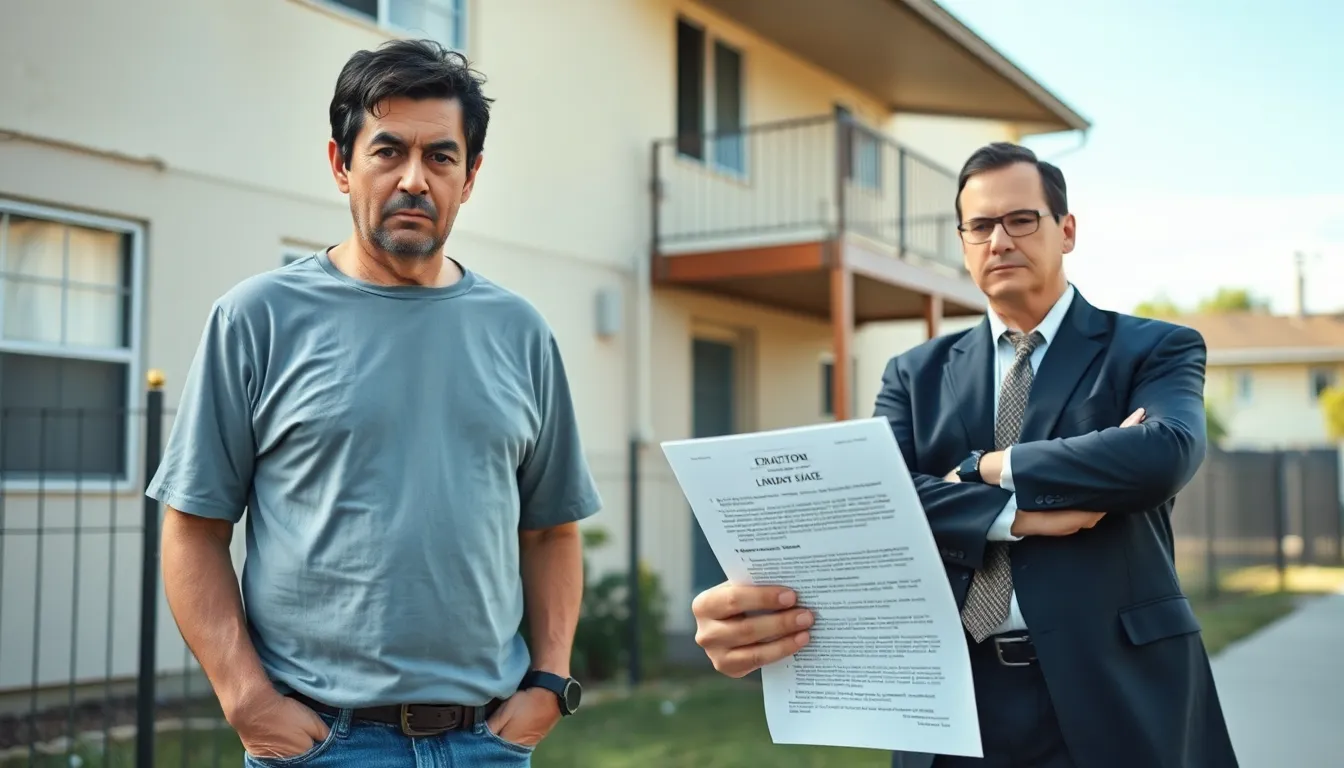Imagine a world where renters wield the same power as superheroes—capable of fighting off unfair evictions and outrageous rent hikes with just a flick of their cape. Enter the Renter’s Bill of Rights, a game-changer for those who’ve ever felt like they were at the mercy of their landlords. This legislation aims to level the playing field, ensuring that everyone has a safe and stable place to call home.
In a housing market that often feels like a circus, the Renter’s Bill of Rights offers a much-needed safety net. It’s not just about protecting tenants; it’s about empowering them. So buckle up as we dive into the ins and outs of this essential document, and discover how it can transform the renting experience from a tightrope walk into a stroll in the park.
Table of Contents
ToggleOverview of Renter’s Bill of Rights
Renter’s Bill of Rights serves as a comprehensive framework aimed at protecting tenants nationwide. This legislation seeks to establish clear guidelines governing rental agreements and landlord obligations. Various provisions within the bill include limitations on rent increases, ensuring that they remain reasonable and predictable.
Fair housing practices stand at the forefront of this initiative. By prohibiting discriminatory actions based on race, gender, or family status, the bill promotes inclusivity within the housing market. Furthermore, it mandates that landlords provide tenants with adequate notice prior to evictions, reinforcing tenant security.
Transparency enhances the landlord-tenant relationship. With requirements for landlords to disclose essential information—such as property conditions and rental terms—tenants can make more informed decisions. Additionally, the bill strengthens protections against unjust evictions, requiring just causes and ensuring tenants have the right to contest eviction notices.
Notably, access to legal resources represents a crucial aspect of this legislation. Tenants can now seek assistance and education regarding their rights, reducing vulnerability to exploitation. Renters also gain the right to organize and form tenant associations, fostering community support and advocacy.
Tenants benefit significantly from these protections. They experience enhanced stability, which ultimately contributes to a more balanced housing market. The Renter’s Bill of Rights embodies a shift toward equitable treatment in rental housing, promoting safety and dignity for all tenants.
Key Provisions of the Renter’s Bill of Rights
The Renter’s Bill of Rights includes several essential provisions that protect tenants and enhance their renting experience.
Security Deposits
Security deposits cannot exceed one month’s rent under this bill. Landlords must return deposits within 30 days of lease termination, minus documented deductions for damages. Clear communication regarding any deductions ensures transparency. Additionally, landlords must provide tenants with a written statement itemizing these deductions. Tenants can dispute unreasonable deductions, promoting fairness in the rental process. Overall, these regulations aim to safeguard tenant finances while encouraging responsible property management.
Eviction Protections
Eviction protections guarantee that tenants cannot be evicted without just cause. Landlords must provide written notice at least 30 days prior to any eviction proceedings. Tenants have the right to contest eviction notices, allowing them to present their defense in court. Furthermore, no tenant can face eviction based solely on rental payment arrangements or participation in tenant associations. Assertively protecting rights, this aspect of the bill enhances tenant stability and fosters a more equitable rental environment.
The Impact on Tenants
The Renter’s Bill of Rights significantly influences tenants across various aspects of their living situations. It addresses crucial issues like living conditions and lease transparency.
Improved Living Conditions
Enhanced living standards emerge from the Renter’s Bill of Rights. This legislation mandates landlords to uphold specific health and safety standards in rental properties. Regular maintenance becomes a legal obligation, ensuring tenants inhabit safe environments. Improved conditions not only reduce health risks but also contribute to overall tenant satisfaction. Communities witness positive shifts as tenants engage more freely in their living spaces. Hence, better-maintained properties foster a sense of pride and belonging.
Increased Lease Transparency
Increased clarity in lease agreements benefits tenants significantly. The Renter’s Bill of Rights requires landlords to provide clear and comprehensive rental agreements. This ensures tenants fully understand their rights and obligations from the outset. Clear terms minimize misunderstandings, preventing conflicts related to lease conditions. Moreover, tenants gain insight into any fees, rules, and responsibilities associated with their rentals. Such transparency empowers tenants to make informed choices, promoting a fairer and more stable rental market. Clarity fosters trust, allowing stronger landlord-tenant relationships to flourish.
Challenges and Criticisms
The Renter’s Bill of Rights faces several challenges and criticisms. Enforcement issues represent a significant obstacle, as local agencies often lack the resources to ensure compliance. Landlords may violate the provisions without facing immediate repercussions. Many believe that without stronger oversight mechanisms, the bill’s impact remains limited.
Limited awareness among tenants also poses a challenge. Many renters remain unaware of their rights granted under this legislation. This lack of knowledge leads to a power imbalance between tenants and landlords. Effective education and outreach programs can bridge this gap and empower renters to utilize their rights fully. Addressing these challenges promotes the bill’s intention of creating a more equitable housing environment.
Conclusion
The Renter’s Bill of Rights stands as a pivotal advancement in tenant protection and empowerment. By establishing clear guidelines and fostering transparency it aims to reshape the rental landscape for the better. The provisions designed to limit rent increases and protect against unjust evictions are essential for promoting fairness and stability.
While challenges remain in enforcement and tenant awareness the bill’s potential to enhance living conditions and strengthen landlord-tenant relationships is significant. With continued education and outreach efforts tenants can fully leverage their rights under this legislation. Ultimately the Renter’s Bill of Rights is a crucial step toward ensuring dignity and respect for all renters in the housing market.









